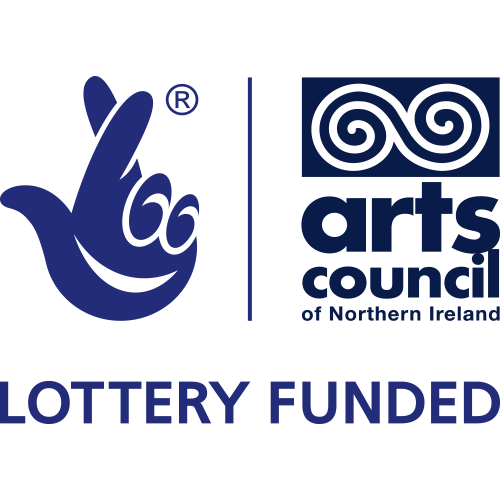10 Years of Moving Image Arts A-Level in Northern Ireland
Date Posted: December 1, 2016
2016 marks 10 years of the Moving Image Arts (MIA) A-Level in Northern Ireland. This unique qualification in digital filmmaking, the first of its kind in the UK, has been proving extremely popular and the uptake by schools and young people has been increasing year on year.
CCEA’s MIA qualification was conceived in parallel with the development of Northern Ireland Screen’s Wider Literacy strategy, the screen agency’s vision for moving image education for all young people in Northern Ireland. Following the AS-level being trialled in 2003, the first cohort of schools, teachers and young people entered the full AS-Level in 2004, just a few months after the publication of A Wider Literacy, with the first A-Level awarded in 2006.
It has been argued that the moving image is the predominant medium of the 21st century. The combination of movement, colour and sound impacts on our daily lives like no other communication medium. To be able to understand and create ideas, messages, and stories using moving image is a vitally important skill for all our young people. Moving image literacy is critical to understanding and interpreting modern society.
The moving image is also a vital dimension of the creative industries. The rapid growth of digital media technologies has made the creative industries increasingly accessible and attractive to young people. The growth of these industries is vital to the continued economic, social and cultural development of Northern Ireland. The potential is limitless. The impact of these developments is being felt within the classroom, where young people are seeking opportunities to learn new digital skills and to express themselves creatively.
Northern Ireland Screen has been supporting this exciting qualification, now offered at GCSE, AS-Level and A-Level, since its inception, through specialist teacher training in Northern Ireland’s three Creative Learning Centres (CLCs) – the Nerve Centre, Derry/Londonderry, Nerve Belfast and the Education Authority’s Amma Centre, Armagh. There has been phenomenal growth in the qualification over the last ten years:
- In 2006 69 students were entered for the A-Level qualification. In 2016 1,319 young people undertook the qualification at GCSE, AS and A-Level across Northern Ireland. This represents an increase of 230 candidates over the 2015 entry
- In 2006 7 schools offered the MIA A-Level qualification. 50 schools now offer Moving Image Arts at GCSE, 100 at AS-Level and 76 at A-Level.
CCEA’S MIA is an applied qualification. Students develop knowledge, critical understanding and skills through practical filmmaking project work in a context related to employability.
Studying MIA Arts provides students with opportunities to:
- develop a critical understanding of film language, narrative, representation and audience in both theory and practice;
- investigate and research others’ work and demonstrate the ability to analyse and evaluate creative purpose;
- acquire knowledge and understanding of moving image genres and contexts;
- develop ideas by investigating and experimenting with film-making techniques and processes;
- develop the ability to manage resources, processes and equipment at different stages of moving image production;
- create complete moving image products;
- develop technical competence in using film-making techniques; and
- evaluate the effectiveness of their practice as film-makers.
The qualification therefore provides a range of practical, transferable skills, the type of skills every employer looks for; the ability to come up with ideas, to problem-solve, to be able to work in a team, to meet deadlines, to be self-motivated and to be able to manage a project successfully from start to completion.
MIA is unique in that coursework focuses on the practical nature of creating moving image. The course is also unique in that students complete exams online where they watch film clips and provide answers which are marked by examiners online.
Just as making a film is a collaborative effort, MIA is a collaboration between teachers and the CLCs. MIA is taught by teachers who have experience in teaching other subjects such as English, Drama, Media Studies, Art and Design and ICT. The CLCs in Northern Ireland play a vital role in training teachers so that they are confident in delivering the qualification. Regular training workshops are run to upskill teachers in every aspect of the MIA qualification from stop-motion animation to sound editing and film theory. This is anchored by a teacher training week run each summer to help teachers prepare for the school year ahead.
During the school year the CLCs continue to support teachers by providing access to specialist equipment for students to complete their projects or organising sessions with industry professionals on film craft skills, e.g. sound editing or animation, to help students complete their projects. This collaboration between the CLCs and teachers means that students have the best possible support needed to succeed in MIA.
In 2015 the MIA qualification was held up as an exemplary project at the launch of A Framework for Film Education in Europe by the EU Creative Europe programme. The Framework established a set of ambitions and outcomes for people learning about film that all educators can aspire to, with the MIA qualification one of three projects presented that exemplify the kinds of outcomes the Framework supports.
The tenth anniversary of MIA also coincides with a new specification which was designed with input from the screen industry itself. This is important in putting together a qualification that provides relevant expertise for young people and also provides the skills that will help them take the first steps in their chosen careers.
MIA is a perfect example of how government agencies, teachers and industry can come together to deliver a qualifications programme that has real value for students and that prepares them for careers in the screen industries, the creative industries and beyond.
Richard Williams, CEO, Northern Ireland Screen commented: “MIA is a challenging and rewarding course. I am firmly of the view that the future of the screen and creative industries will be in the hands of students who have built from the foundation of having studied MIA. Already we see MIA alumni making waves across the sector and the universities report that screen and creative industry courses are dominated by MIA students. At the same time, MIA is a brilliant introduction to entrepreneurism and leadership, skills in great demand right across the economy far beyond the creative industries.”
Justin Edwards, CE0, CCEA commented “2016 is a particularly special year, as we celebrate 10 years of the Moving Image Arts Showcase and the A-Level Qualification. Back in 2004, GCE AS Moving Image Arts was the first ever online assessed A Level in the UK, with 69 students, across seven schools, sitting the examination. Today, we have 610 GCSE students and 709 GCE students sitting the subject. Congratulations to all our Moving Image Arts students for realising their vision through creativity and hard work.”



